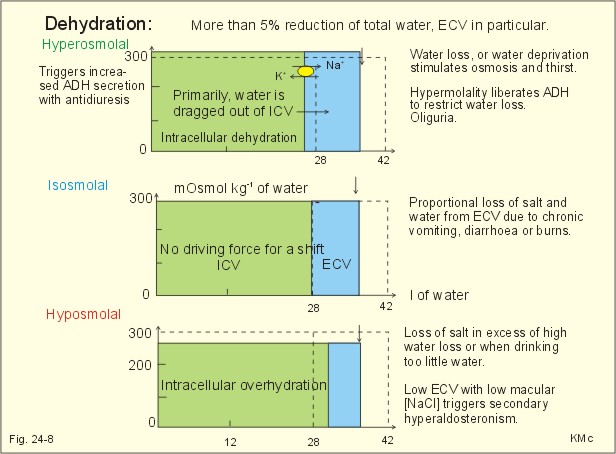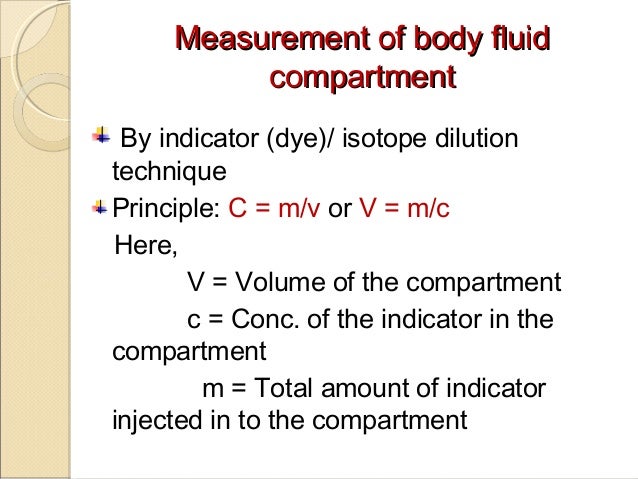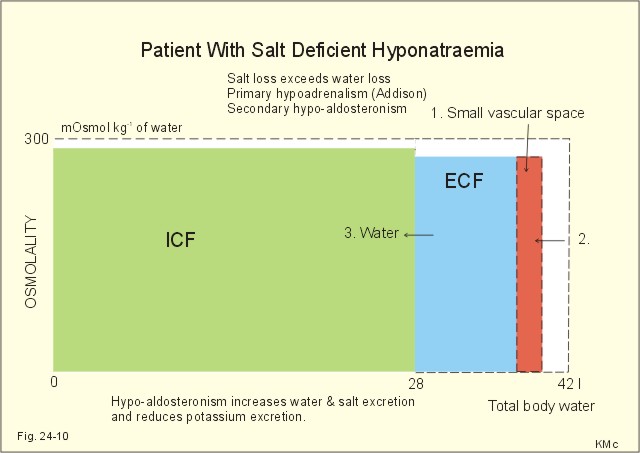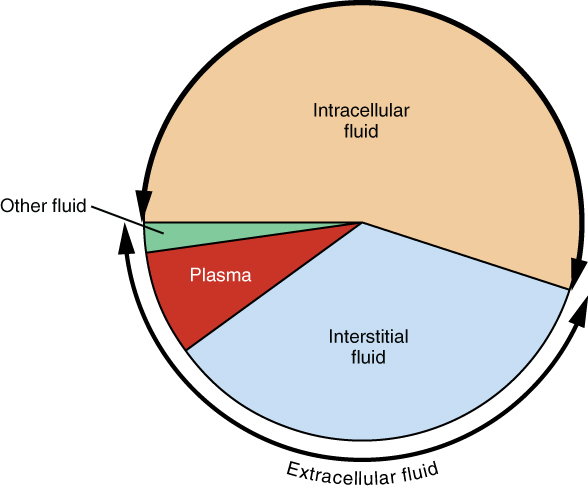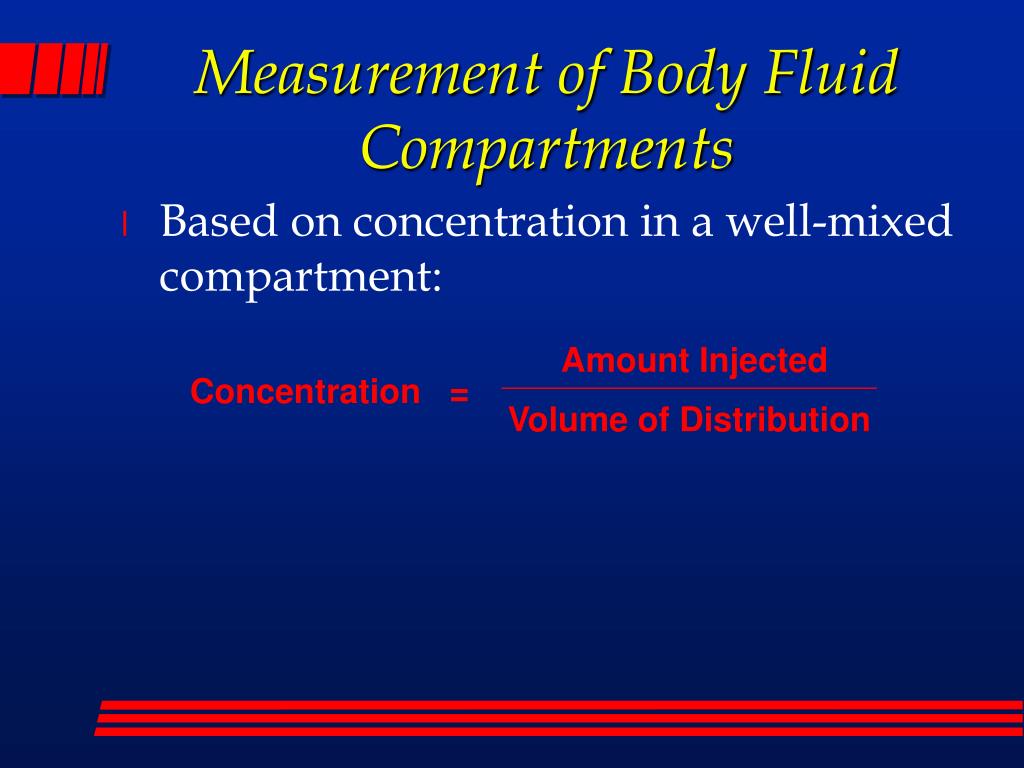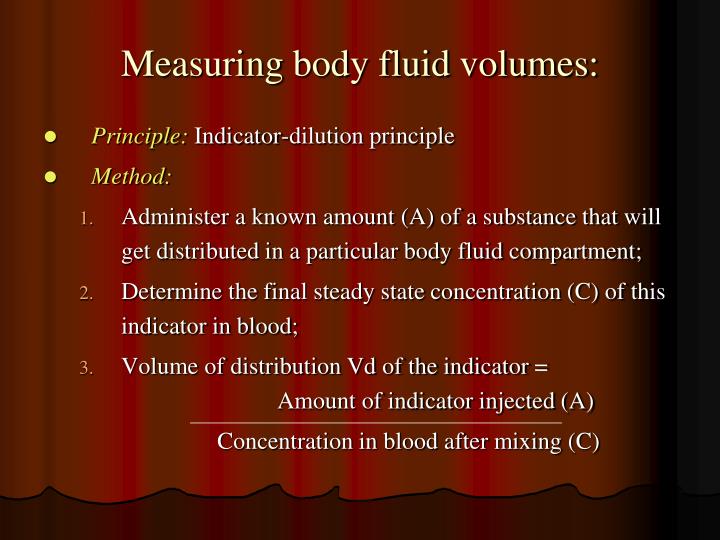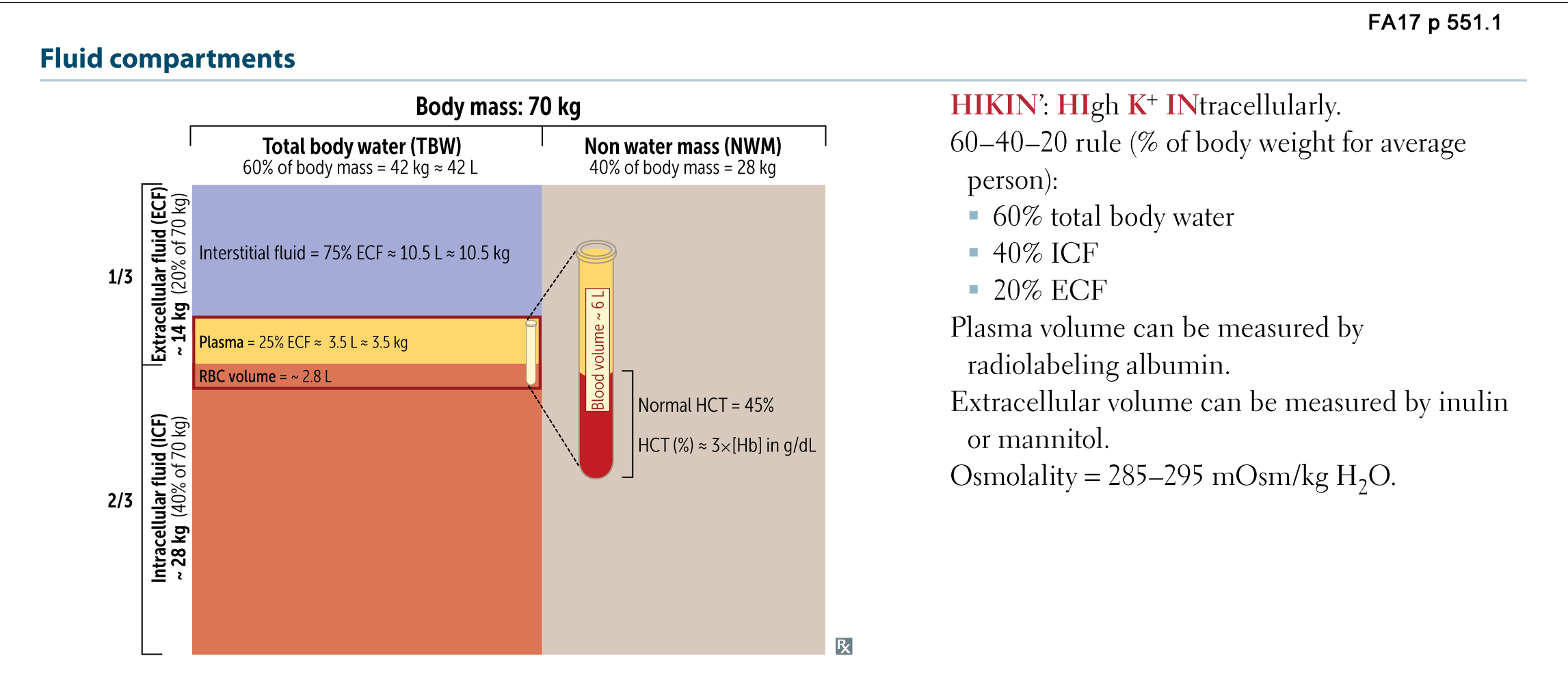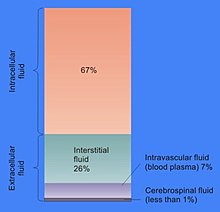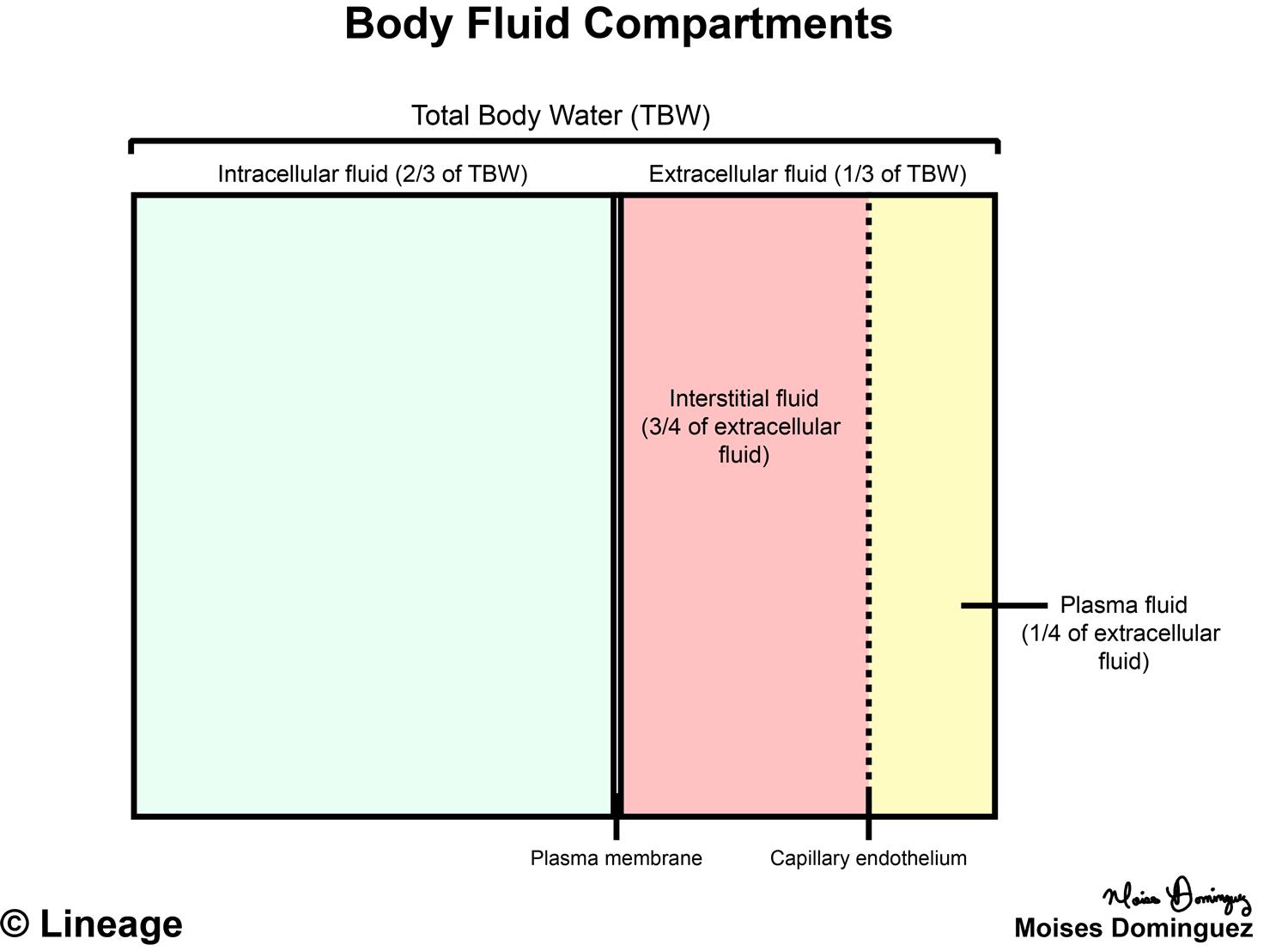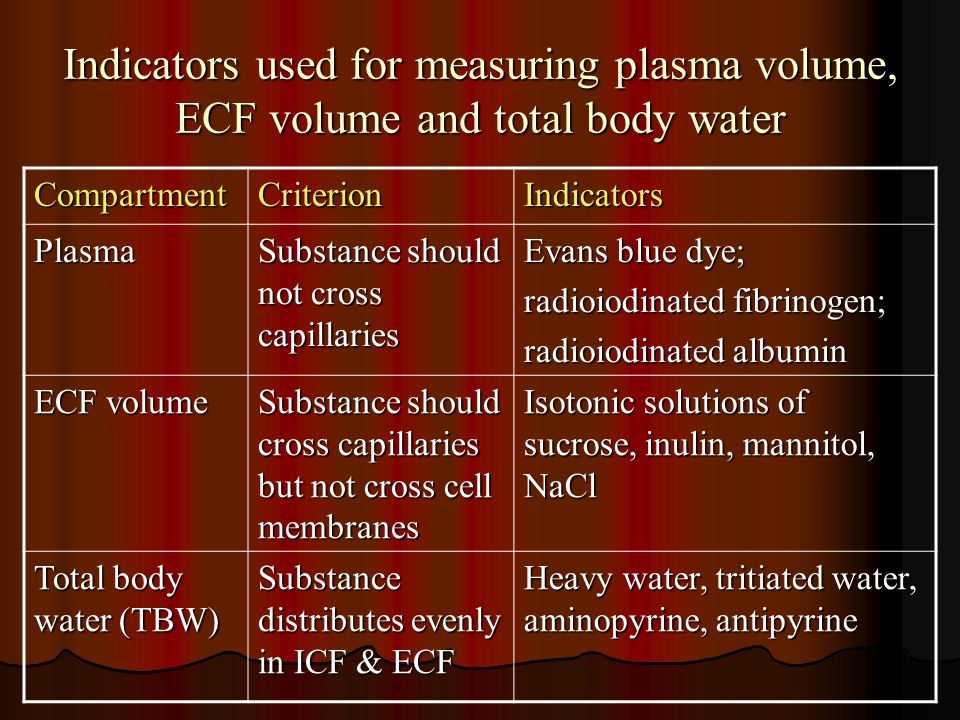
Body Fluid Compartments And Their Measurement
Measurement of different body fluid compartments. In contrast skeletal muscle contains 75 water. About two thirds is in the intracellular fluid compartment icf. The intracellular fluid is the fluid within the cells of the body. Intracellular fluid the intracellular fluid of the cytosol or intracellular fluid or cytoplasm is the fluid found inside cells. The two main fluid compartments are the intracellular and extracellular compartments.
There are two main fluid compartments water occupies in the body. Body fluids can be discussed in terms of their specific fluid compartment a location that is largely separate from another compartment by some form of a physical barrier. These include intracellular fluid and extracellular fluid. Total mass of the indicator after distribution in the compartment is the same as the mass before distribution. Body fluid compartments can be measured by dilution of a compound that distributes only in the space of interest. The intracellular fluid icf compartment is the system that includes all fluid enclosed in cells by their plasma membranes.
Extracellular fluid compartment further. This is a simplified arabic illustration for the medical students if you have any questions please dont hesitate to contact me at fb. Fluid compartments are defined by their position relative to the cellular membrane of the cells that make up the bodys tissues. So the more muscles one has the higher the total body water will be. Indicator dilution method depends upon law of conservation of mass. Indicator properties disperses evenly throughout the compartment.
The human body and even its individual body fluids may be conceptually divided into various fluid compartments which although not literally anatomic compartments do represent a real division in terms of how portions of the bodys water solutes and suspended elements are segregated. The indicator dilution principle is based on the definition of a concentration. The intracellular fluid icf compartment is the system that includes all fluid enclosed in cells by their plasma membranes. If the amount of the substance is known and the resulting concentration is measured the volume can be calculated. Body fluids can be discussed in terms of their specific fluid compartment a location that is largely separate from another compartment by some form of a physical barrier. The total body water is divided into compartments and useful physiological insight and some measure of clinical predictability can be gained from this approach even though most of these fluid compartments do not exist as discrete real fluid collections.
Total body water is 60 of body weight and is divided into various body fluid compartments.
Random Post
- mike o'hearn body measurement
- beyonce body measurement
- nadia jamil body measurements
- the study of biological growth and body measurement
- how to get your bra measurement
- hera hilmar body measurement
- body measurement gym
- body measurements number
- diagram of body measurements
- hourglass body measurement
- 3 year old body measurements
- how to add body measurements to myfitnesspal app
- body measurements app iphone free
- narsingh yadav body measurement
- gopika body measurements
- payal rohatgi body measurements
- body measurement person
- lifetime fitness body fat measurement
- bra measurement tool
- body measurement figure
- kurt angle body measurements
- julia vins body measurement
- dawn wells body measurement
- sohai ali abro body measurement
- body fat measurement
- healthy weight body measurements
- bra band measurement chart
- body measurements slimmer
- body weight measurement chart
- amy adams body measurement
- willys jeep body measurements
- ishita raj sharma body measurement
- advances in the science and application of body composition measurement
- jr ntr body measurement
- bra size of indian celebrities
- personal trainer body measurement sheet
- bra measurements what does it mean
- body measurements image creator
- body measurement slideshare
- what body measurements to take
- nithin body measurements
- aksana body measurements
- measurement with body parts
- kim sae ron body measurement
- correct bra measurement sizing
- sohini sarkar body measurement
- bra fitting reading
- how to body measurements for weight loss
- hikvision thermal body temperature measurement
- que es el body measurement















